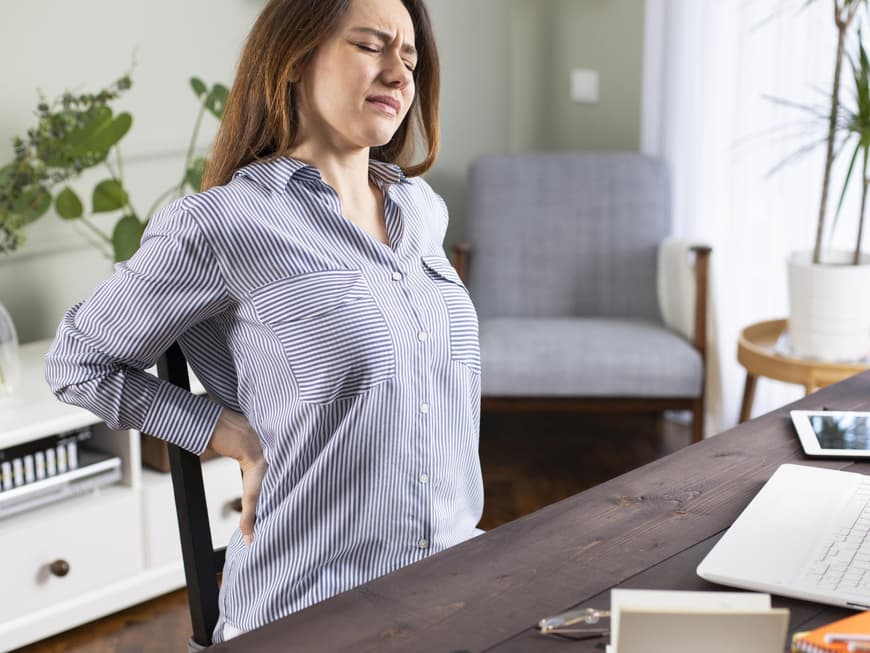
What is a blockage?
Blockages in the back usually occur suddenly. This results in a restriction of movement in the area of the spine. The blockages can occur, for example, in the thoracic spine (thoracic spine blockage), the cervical spine (cervical spine blockage) or the lumbar spine (lumbar spine blockage). If movement is suddenly restricted in one of these areas, our body sends out pain signals.
How does the pain of a back blockage manifest itself?
The pain usually occurs acutely and can resemble the symptoms of a herniated disc. Restricted movement and stiffness occur in the affected area, the pain often radiates further and the muscles in the area harden. Those affected often adopt a relieving posture due to the severe pain. This posture can then lead to further tension or incorrect strain. A real vicious circle! Pain in the thoracic vertebrae can also be accompanied by rib pain when breathing. Sitting or lying down for long periods of time usually exacerbates the symptoms.
Causes of blockages
Blockages are often caused by incorrect movement or dislocations. However, incorrect strain, lack of movement, tension, inflammation, overloading, shortened muscles, injuries such as whiplash and other illnesses can also cause a blockage.
Blockage in the back: What to do?
If the pain is severe or does not subside after a few days, a visit to the doctor is advisable. Acute pain can be treated with injections or painkillers, for example. Heat and tapes can also provide relief. In the long term, massages, a visit to a physiotherapist or manual therapy are useful to release the blockages and strengthen the back muscles in the affected area. You will also learn exercises to prevent or strengthen the back muscles.
For less severe cases, you can try to get the blockages under control yourself with the help of heat, mild painkillers, special exercises and movement. Try to alternate between lying, sitting and walking, which is good for your back. Do not lift heavy objects! Normally, the symptoms usually disappear after a week.
However, if you experience numbness, paralysis or discomfort, you should go to hospital immediately, as otherwise nerves can be permanently damaged.
More on the topic of back pain:
Author: Ilka-Marie Hagenbücher
